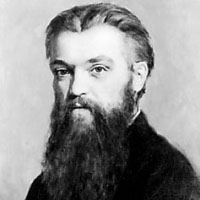| Archived old Fall-Spring tutorial abstracts: | Tuturials 2000-2001 | Tuturials 2001-2002 | Tuturials 2002-2003 | Tuturials 2003-2004 | Tuturials 2004-2005 | Tuturials 2005-2006 | Tuturials 2006-2007 |
|---|---|---|---|---|---|---|---|
| Archived old Summer tutorial abstracts: | Summer 2001 | Summer 2002 | Summer 2003 | Summer 2004 | Summer 2005 | Summer 2006 | Summer 2007 |
There will be two tutorials offered this year: one each in the Fall and one in the Spring. More details on the tutorials will appear here later.
Fall 2007 Tutorial
Random graphsDescription: A random graph is a graph in which properties such as the number of
graph vertices, graph edges, and connections between them are
determined in some random way. The theory of random graphs, which was
introduced by Erdos and Renyi, has now become indispensable to
researchers in diverse areas. The main aim of this tutorial is to
study several classical results in the area. More precisely, we will
discuss the following topics:
A random graph is a graph in which properties such as the number of
graph vertices, graph edges, and connections between them are
determined in some random way. The theory of random graphs, which was
introduced by Erdos and Renyi, has now become indispensable to
researchers in diverse areas. The main aim of this tutorial is to
study several classical results in the area. More precisely, we will
discuss the following topics:
For more information, contact Anh-Vinh Le ([email protected]). |
Spring 2008 Tutorial
Clifford algebras and spinorsDescription: Clifford algebras, invented by William Clifford in 1876 in an attempt
to build an analogue for quaternions in higher dimensions, are
associative algebras generated by elements of some vector space
modulo quadratic relations coming from a quadratic form on that vector
space.
Clifford algebras, invented by William Clifford in 1876 in an attempt
to build an analogue for quaternions in higher dimensions, are
associative algebras generated by elements of some vector space
modulo quadratic relations coming from a quadratic form on that vector
space. Not surprisingly, the theory of Clifford algebras has deep connections with the theory of quadratic forms and the theory of representations for classical groups. Clifford algebras can also be considered as deformations, or quantizations, of exterior algebra, meaning presence of a certain deformation theory. Splitting into even-graded and odd-graded components gives a Clifford algebra a structure of a superalgebra. Among the first examples of Clifford algebras, there are the field of complex numbers, viewed as an algebra, and the algebra of quaternions. Spinors are elements of certain spaces (representations of Clifford algebras). They are widely used in physics, especially in field theory, where vector fields and spinor fields represent two possible types of relativistic particles. The guideline for this tutorial is Ian Porteous' book "Clifford algebras and Classical Groups". The goal is to obtain a solid base in Clifford algebra theory and become familiar with spinors. The tutorial may be of interest for students who want to learn the actual mathematical base of modern physics (well, a small part of it). It also offers an opportunity to gain and/or advance skills in representation theory, linear algebra and classical groups, and to get a glimpse of super linear algebra. Prerequisites: Math 122, 123 (or familiarity with the following notions: algebra, quadratic form, tensor power, orthogonal group, representation of a group or an algebra). Background in physics is not required. For more information, contact Rina Anno ([email protected]). |